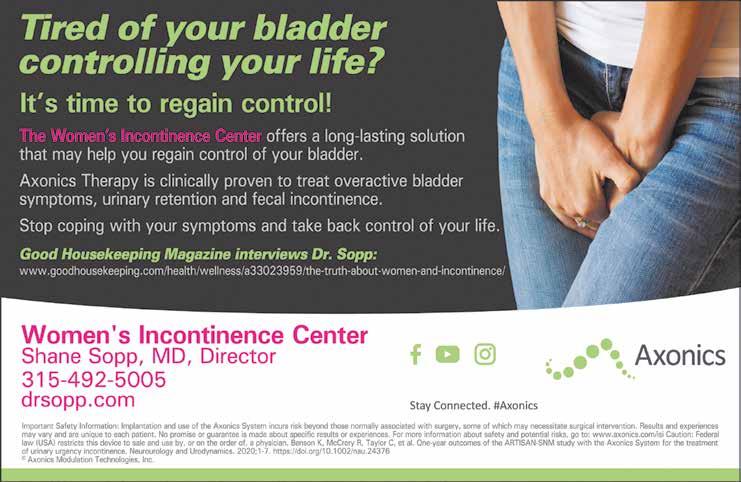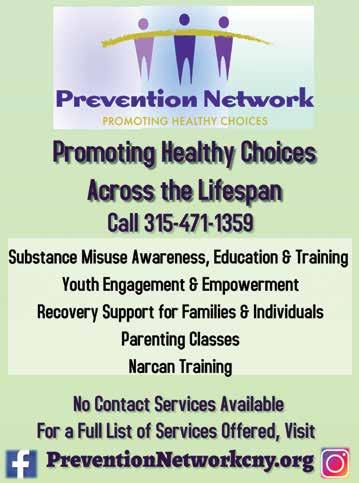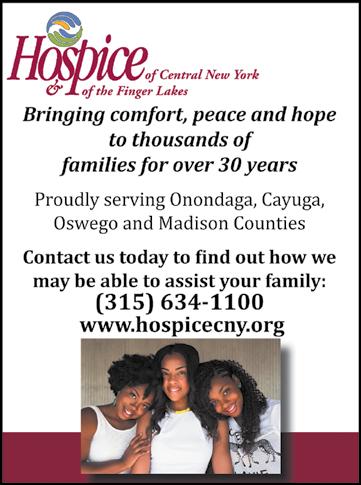
3 minute read
WOMEN'S HEALTH
The challenges of life as an “XX”
Dr. Shane Sopp, Urogynecologist
Ihave one wish when I die: don’t bring me back as a woman! Seriously, men could never do what women endure. That’s hard to fathom coming from a man, right? Not for me... when you’ve cared for 30 women a day for four decades, well, you do the math. But if you look at many of the physiologic challenges women have to face throughout their lifetime, I’m confident that we can find solutions to most if not all of them. I believe an educated patient is an empowered patient. As such, I invest time in our patients so that their decisions are based on current facts. The suggestions that follow assume that you have no medical conditions that would preclude you seeking my options. • Menstrual cycles: if yours are easy, don’t brag... your friends might hate you! They can be heavy, painful, irregular, and sometimes feel like they last forever. What causes the symptoms? Well there’s a domino effect. Your brain controls your ovaries and your ovaries control your uterus. And if you don’t have a perfect signal between the brain in the ovaries, to have a perfect ovulation, the receiver of that dysfunction is the uterus and, it doesn’t know when to grow a lining, how much to grow and when to shed it. There are also some benign disease states that can cause this such as endometriosis (when the lining of the uterus, called the endometrium, develops outside of the uterus and grows and sheds when the inside of the uterus does) which can also cause non-menstrual pain and pain with intercourse. • PMS (premenstrual syndrome) is a collection of emotional dysfunctional symptoms that occur before and during your period because that’s when your estrogen levels drop. • Functional ovarian cyst can also develop from that irregular signal between the brain and the ovary. They’re called functional because they’re actually a dysfunctional ovulation; typically most of the time they go away on their own. But while they’re there they can cause some significant one-sided pain. • A simple treatment for all of the above problems is something that controls ovulation. This can be a birth control pill or patch or ring, etc. and this is safe to take all the way to menopause. A progesterone IUD is another option for controlling painful/heavy menses, and it also gives birth control. And it has no negative affect on conceiving. • If endometriosis is the cause of your problems and you don’t want to take any of these above options, there are now some new medications to treat endometriosis more effectively than the birth control pill. • Fibroids don’t usually develop in women until her 30s or 40s. These are muscle balls in the wall of the uterus. Fibroids are to a uterus what knots are to a piece of wood. They don’t always cause problems, but when they do there are a number of medical or surgical options to take care of them and preserve your fertility. • Menopause, premenopause, perimenopause, postmenopause… very confusing. Let’s instead call it estrogen deficiency. Right around your early 40s your ovaries start to lose estrogen; just like cell phones losing their charge. And you start getting a plethora of symptoms, not just hot flashes: sleep disturbance, fatigue, decreased sex drive and orgasm, vaginal dryness, palpitations, depression and anxiety, decreased focus and memory, changes in your hair, facial hair, joint pain, headaches. If you don’t experience these, again, don’t tell those same friends! But just like cell phone batteries, you can recharge, and here’s something I’ll bet most of you are not aware of: estrogen does not cause breast cancer. Actually, it allows a breast cancer to be picked up earlier than if you’re not on it. Take it to the bank. Unfortunately, there’s not enough time to expand on this. But my wife has been on HRT for 20 years, and I love my wife. • PS: XX are your chromosomes. SWM













